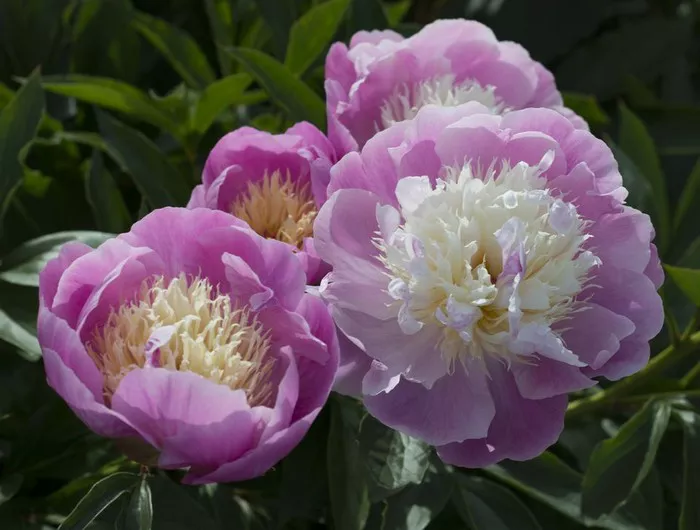Peonies, with their lavish blooms and captivating fragrance, have long been cherished in gardens worldwide. Beyond their ornamental appeal, these flowers have occasionally found their way onto the plates of culinary enthusiasts. But can you truly eat peony flowers? This article delves into the culinary potential of peonies, discussing their historical uses, culinary applications, nutritional value, and safety considerations.
Historical Uses of Peony Flowers
Peonies (genus Paeonia) have a rich history steeped in folklore, medicine, and culinary traditions. Originating from Asia, particularly China, where they have been cultivated for over 2,000 years, peonies hold symbolic significance in various cultures. In Chinese culture, peonies symbolize wealth, honor, and prosperity, often featured in art, poetry, and celebrations.
Historically, peony flowers have been utilized not only for their aesthetic beauty but also for their medicinal properties. Traditional Chinese medicine (TCM) incorporates various parts of the peony plant, including the flowers, roots, and seeds, for treating ailments such as inflammation, pain, and menstrual irregularities.
Culinary Applications of Peony Flowers
While primarily known for their decorative purposes, peony flowers have occasionally made appearances in culinary creations across different cultures. In Chinese cuisine, peony petals are sometimes used to infuse teas or to garnish dishes, adding a delicate floral aroma and visual appeal.
Similarly, in Japanese cuisine, peony petals are employed for their aesthetic value, often adorning traditional sweets such as wagashi or floating delicately in clear soups like chawanmushi. The subtle fragrance and vibrant colors of peony petals contribute to the sensory experience of these dishes.
In Western culinary traditions, peony flowers have been utilized sparingly due to concerns about their toxicity. However, some adventurous chefs have experimented with incorporating peony petals into salads, desserts, and even cocktails, harnessing their floral essence to elevate culinary creations.
Nutritional Value of Peony Flowers
Peony flowers contain a variety of nutrients and bioactive compounds that contribute to their potential health benefits. While specific nutritional data for peony flowers may be limited, they are believed to contain vitamins, minerals, and antioxidants.
Antioxidants present in peony flowers, such as flavonoids and phenolic compounds, may help combat oxidative stress and inflammation in the body, potentially reducing the risk of chronic diseases like heart disease and cancer. Additionally, the vibrant pigments in peony petals indicate the presence of anthocyanins, which have been linked to various health benefits, including improved cognitive function and cardiovascular health.
Safety Considerations
Despite their culinary potential, it’s crucial to address safety considerations when consuming peony flowers. While many edible flowers are celebrated for their flavors and nutritional benefits, not all flowers are safe for human consumption. Peony flowers, in particular, contain compounds that may cause adverse reactions if ingested in large quantities.
One primary concern with consuming peony flowers is their potential toxicity. Peonies contain substances such as paeonol and paeoniflorin, which can cause gastrointestinal discomfort, allergic reactions, or skin irritation in sensitive individuals. Moreover, certain species of peonies, such as Paeonia lactiflora, may contain higher levels of these compounds compared to others, further complicating their safety profile.
To minimize the risk of adverse effects, it’s essential to exercise caution when incorporating peony flowers into culinary preparations. Only use petals from peonies grown without the use of pesticides or other harmful chemicals, as these substances may contaminate the flowers and pose additional health risks.
Additionally, when consuming peony flowers for the first time, start with small quantities to gauge individual tolerance and monitor for any adverse reactions. If you have known allergies to plants in the Paeoniaceae family or a history of sensitivities to floral compounds, it’s advisable to avoid consuming peony flowers altogether.
Conclusion
Peony flowers offer a tantalizing blend of beauty, fragrance, and culinary potential. While they have been historically revered for their ornamental value and medicinal properties, their suitability for consumption remains a subject of debate. Culinary enthusiasts intrigued by the idea of incorporating peony petals into their dishes should proceed with caution, considering safety considerations and potential allergic reactions.
Ultimately, the decision to eat peony flowers rests on individual preferences and risk tolerance. For those willing to explore the culinary possibilities of peonies, mindful sourcing, moderation, and awareness of personal sensitivities are paramount. With proper care and attention, peony flowers can add a touch of elegance and flavor to culinary creations, enriching the dining experience with their unique charm.


